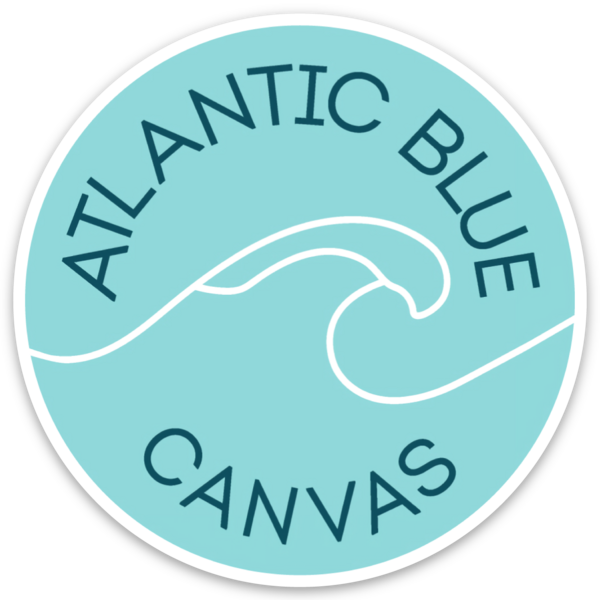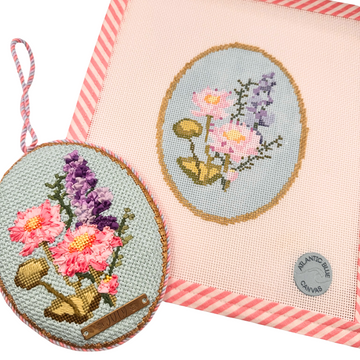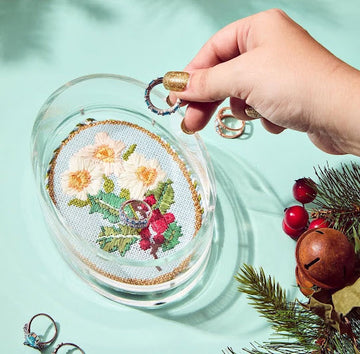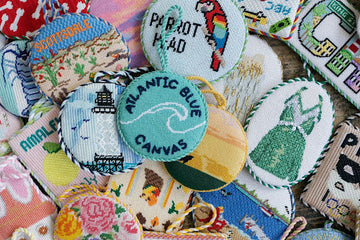Are you exploring the world of needlepoint but overwhelmed by the wide variety of stitches available? Whether you're just getting started or looking to enhance your skills, mastering the most popular needlepoint stitches will lay a strong foundation for every project you take on.
This comprehensive guide is designed especially for beginners who want to understand and practice essential stitches, choose the right ones for their projects, and create beautiful textured designs on canvas.
What Is Needlepoint and Why Do Stitches Matter?
Needlepoint is a timeless form of embroidery that uses yarn or floss to stitch patterns on open-weave canvas. While the craft may appear simple at first glance, the magic truly lies in the type of stitch used. Each stitch contributes a unique texture, density, and visual effect to your piece.
Knowing how to do needlepoint stitches correctly not only improves the visual appeal of your design but also enhances the durability and professional finish of your work. Whether you're designing a floral cushion cover, a modern wall art piece, or a monogrammed keychain, the right stitch can transform your creation.
Key Takeaways for Needlepoint Beginners
- The Tent Stitch is the ideal starting point for any beginner in needlepoint.
- Basketweave and Continental stitches help cover areas smoothly and avoid canvas distortion.
- Decorative stitches like Cross Stitch and French Knot bring texture and personality to designs.
- The right tools—such as tapestry needles, hoops, and sampler kits—make learning easier and more fun.
- Daily practice builds muscle memory and improves technique significantly.
- Mixing multiple stitches in a single piece adds creativity and visual interest.
- 7 Most Popular Needlepoint Stitches (and When to Use Them)
Below is a curated list of the 7 essential needlepoint stitches every beginner should learn. Each stitch includes use cases, benefits, and skill-level recommendations to help you practice with confidence.
1. Tent Stitch
Best Use: Filling large backgrounds and base layers
Benefits: Simple to learn, works well with other stitches
Skill Level: Beginner-friendly
The Tent Stitch is often the very first stitch taught to beginners. It's a diagonal stitch that forms a uniform grid and works well for filling large spaces. It’s clean, quick, and ideal for learning the basics of canvas tension and thread control.
Why It’s Essential:
- Forms the basis for many advanced stitches
- Great for practicing stitching consistency
-
Supports shading and color blending
2. Basketweave Stitch
Best Use: Covering large areas without distorting the canvas
Benefits: Prevents warping, offers a neat finish
Skill Level: Beginner to Intermediate
The Basketweave Stitch is another variant of the Tent Stitch but is stitched diagonally across the canvas in alternating rows. This technique is ideal for large projects as it evenly distributes tension, keeping your canvas perfectly flat.
Quick Tip:
When you’re working on large needlepoint projects like seat covers or wall hangings, choose the Basketweave to maintain shape and symmetry.
3. Continental Stitch
Best Use: Small, detailed areas or outlines
Benefits: Sturdy and easy to execute
Skill Level: Beginner
The Continental Stitch is similar to the Tent Stitch but executed row by row in a single direction. This stitch is often used when finer detail is required or for narrow areas where precision matters.
Use Case Ideas:
- Outlining small motifs
- Working on fine lettering
-
Filling narrow bands or borders
4. Cross Stitch
Best Use: Decorative accents and patterns
Benefits: Adds texture and layered visual interest
Skill Level: All levels
Cross Stitch is perhaps one of the most recognizable embroidery stitches, forming an “X” pattern over canvas holes. This stitch allows for more creative expression, offering a pixel-like look that is ideal for pattern work and monograms.
Where to Use:
- Creating borders or frames
- Crafting decorative initials or text
-
Adding variety to geometric patterns
5. French Knot
Best Use: Floral centres, eyes, accents
Benefits: 3D texture, visual pop
Skill Level: Intermediate
The French Knot brings dimension and sophistication to any needlepoint project. By looping the thread around the needle and anchoring it on the canvas, you create a small raised knot.
Application Examples:
- Flower centres
- Animal or doll eyes
- Dotted background textures
Pro Tip:
If you're aiming for a textured finish that looks tactile and artistic, sprinkle French Knots across your design.
6. Brick Stitch
Best Use: Geometric borders, structured patterns
Benefits: Clean and architectural finish
Skill Level: Beginner to Intermediate
The Brick Stitch resembles a brick wall when complete and works well for adding a structured or symmetrical feel to your designs. It’s stitched in horizontal rows, with each stitch offset from the row above.
Great For:
- Framing large canvas areas
- Creating contrast between soft and structured elements
-
Building texture that feels modern
7. Gobelin Stitch
Best Use: Color blocks and vertical panels
Benefits: Fast coverage, bold texture
Skill Level: Intermediate
The Gobelin Stitch is a longer vertical stitch that’s stitched over two or more threads. It’s perfect for when you want to fill large sections quickly and create visual drama through color changes and gradients.
Best Practices:
- Use on bold, simple designs
- Layer with other stitches for varied texture
-
Combine with Tent or Basketweave for hybrid styles
Recommended Tools and Kits for Needlepoint Success
The right tools can make or break your needlepoint experience. Here’s what you’ll need to practice the above stitches with ease:
Must-Have Needlepoint Supplies:
- Beginner Needlepoint Kit – Includes canvas, floss, and pattern
- Tapestry Needles (Assorted Sizes) – Blunt tip for canvas-friendly stitching
- Embroidery Hoop or Frame – Keeps fabric taut while stitching
- Stitch Sampler Practice Canvas – For practicing different stitches side-by-side
Investing in a complete needlepoint kit is especially helpful if you’re following a beginner needlepoint guide and want everything in one place.
Beginner Tips for Learning Needlepoint Stitches
To get the most out of your needlepoint practice, follow these expert tips:
1. Start with Simpler Stitches
Tent, Continental, and Basketweave are ideal for beginners because they are repetitive and easy to memorize.
2. Don’t Rush the Process
Each stitch type has a rhythm. Focus on quality over speed to build strong muscle memory.
3. Use High-Contrast Floss for Practice
When learning, choose colors that contrast with your canvas. It helps you spot mistakes and improves stitch accuracy.
4. Watch Video Tutorials
Visual learners will benefit from watching close-up tutorials. Pair them with this guide for a well-rounded learning experience.
Still not sure if you are ready to needlepoint? Read our guide on how to do basic needlepoint stitches step-by step.
Also Read: Needlepoint Stitches: The Complete Beginner-to-Expert Guide
Frequently Asked Questions About Needlepoint Stitches
1. What’s the easiest needlepoint stitch to start with?
The Tent Stitch is the easiest and most versatile stitch to begin with. It forms the basis of many advanced techniques.
2. Are all stitches used for the same purpose?
No, each needlepoint stitch has a specific use case—some are better for filling large areas, others for details or textures.
3. How often should I practice?
Dedicate at least 10–15 minutes a day to practicing a stitch. This helps build hand coordination and improves confidence.
4. Do I need expensive materials to start?
Not at all! A basic needlepoint kit with canvas, floss, and needles is enough to get started.
5. Can I mix multiple stitches in one project?
Absolutely! Combining Tent with French Knots or Cross Stitches can make your work more dimensional and artistic.
Final Thoughts: Stitch Your Way to Creativity
Learning and practicing these seven popular needlepoint stitches will open up a world of creativity and artistic satisfaction. Whether you’re filling bold sections with Gobelin Stitch or adding delicate detail with French Knots, each stitch tells part of your story.
So don’t be intimidated—embrace each step, and stitch by stitch, you’ll master the craft. With time and practice, your confidence and artistry will grow.
Ready to Start Stitching?
Grab a Beginner’s Needlepoint Kit, choose a few easy patterns, and begin practicing the top needlepoint stitches listed above. Combine this guide with daily practice, and you’ll be designing personalized needlepoint masterpieces in no time.
Ready to move on to more advanced stitches? Read our blog on Advanced Needlepoint Stitches to Try After the Basics
Exploring Needlepoint Stockings for Christmas? Read our blog on making your own DIY needlepoint stockings this Christmas.





